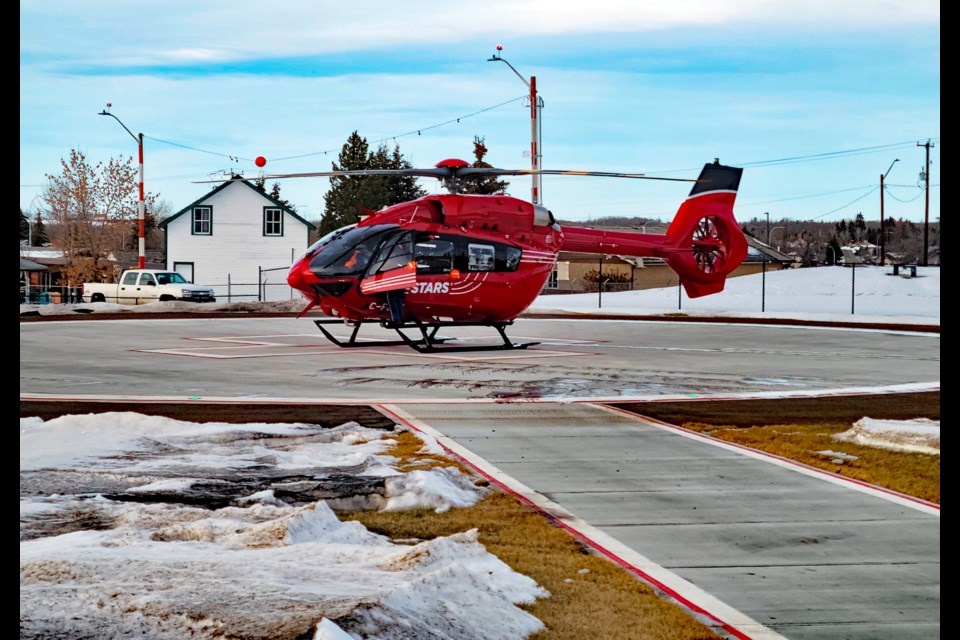INNISFAIL – Senior STARS Air Ambulance officials came to an Innisfail council meeting last week to commend the municipality for its “influential and monumental achievement” of upgrading the town's heliport in 2022 at a cost of almost $650,000 from its own coffers.
“We can't thank you enough for your dedication and leadership,” said Glenda Farnden, STARS’ senior municipal relations liaison, to council during its regular meeting on Aug. 26. “We fully understand this was a big undertaking for a community like the Town of Innisfail but we're seeing the reflection of benefits to your residents, even through the statistics.”
Farnden was joined by Shannon Paquette, STARS’ donor relations and development officer, for a 20-minute presentation to council members.
During their presentation council members were told the town is now averaging about 8.5 STARS missions per year, where within Red Deer County itself the rural municipality is currently averaging 98 missions per year.
“Out of 201 total area residents flown since 2010, 39 residents were actually picked up in Innisfail,” said Farnden, noting the overall increases. “Of those 201,162 residents were flown from 46 other locations across two provinces.
“This is a testament to the value of partnership and being able to have access to STARS wherever your residents may travel across western Canada where we have six bases in three provinces, and we serve a fourth province in B.C.”
Paquette added STARS have become an innovative leader and pioneer in the critical care industry.
“We were the first civilian organization to have night vision goggles. Since half of our calls occur at night that was a vital addition to our processes,” said Paquette. “We're the first ones in North America to carry universal blood on board, which can be used by any patient.
“And we've recently increased that to four units from two units,” she added. “As you can imagine, this is the difference between life and death for many, many patients that we fly.”
But there are enormous costs to ensure STARS’ essential lifesaving role is sustainable.
Council was told STARS, a non-profit agency celebrating 40 years of service to Albertans in 2025, had recently secured a 10-year service agreement with Alberta Health Services that will see the agency receiving $15 million per year.
However, that still leaves STARS with just under $28 million that must be fundraised each year to maintain three bases in Alberta.
About $10 million is raised annually through a lottery, and STARS is still left with $18 million it must raise through corporate sponsors, as well as from many community events, individual supporters and municipal partners.
Farnden noted partnerships with municipalities began in 2006 to support the Grande Prairie base. Today 94 per cent of rural Alberta has signed on.
STARS is now focusing on building regional partnerships with the towns and villages that lie within counties, including Red Deer County.
The agency would like to add Innisfail but not necessarily as a partner that would give a minimum $2 per capita each year as part of its Municipal Initiative Program.
“We would kindly like to ask for your consideration as a council for any size of contribution you could put forward, that we can recognize you as a part of that 94 per cent of Alberta as we build that sustainable relationship,” said Farnden, who later emphasized to the Albertan the $2 per capita amount from Innisfail is not being sought. “We recognize they still have some ongoing financial commitments to the helipad.”
Mayor Jean Barclay told the Albertan last week that while council will discuss STARS’ request there are many other “needs” that must be considered.
“We're in an environment right now where there's a lot of challenges and a lot of needs,” said Barclay. “We would have to see what that (STARS request) looks like during budget deliberations.”



